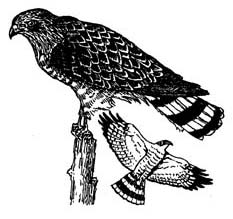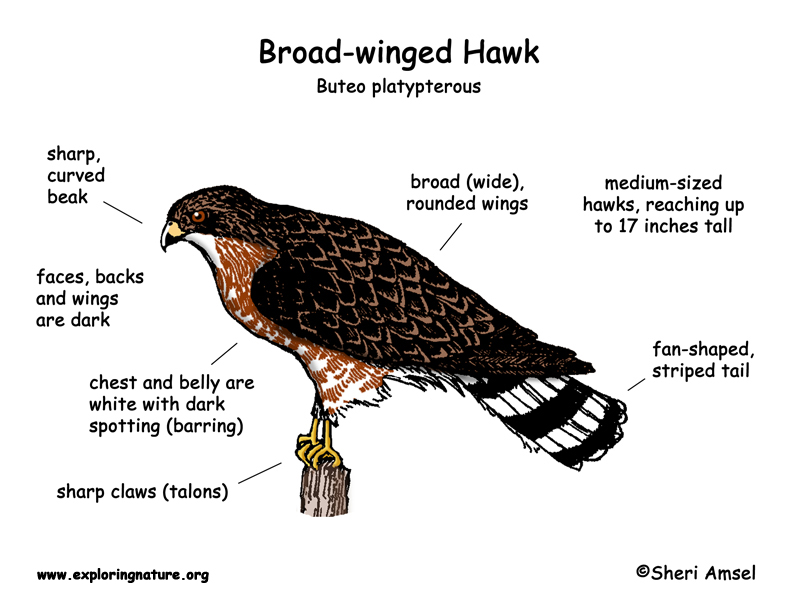

They spend the winter in southern Mexico and South America. They breed in summer across southern Canada and the eastern half of the U.S. down to northern Florida.
They summer in deciduous forests and spend the winter in tropical forests.
They are medium-sized hawks, reaching up to 17 inches tall. They have broad (wide) wings. Their faces, backs and wings are dark. Their chest and belly are white with dark spotting (barring). This helps the hawk blend into the forest.
They go south (migrate) in large flocks. They can travel over 4,000 miles to their winter home.
They eat small mammals, birds, reptiles, amphibians and insects. They hunt by dropping down from above in the trees.
They make a large nest of sticks, lined with small bits of wood. The female lays 1-5 pale blue eggs with some spots.
Kingdom: Animalia
Phylum: Chordata
Subphylum: Vetebrata
Class: Aves
Order: Falconiformes
Family: Accipitridae
Genus: Buteo
Species: B. platypterus
When you research information you must cite the reference. Citing for websites is different from citing from books, magazines and periodicals. The style of citing shown here is from the MLA Style Citations (Modern Language Association).
When citing a WEBSITE the general format is as follows.
Author Last Name, First Name(s). "Title: Subtitle of Part of Web Page, if appropriate." Title: Subtitle: Section of Page if appropriate. Sponsoring/Publishing Agency, If Given. Additional significant descriptive information. Date of Electronic Publication or other Date, such as Last Updated. Day Month Year of access < URL >.
Amsel, Sheri. "Hawk (Broad-winged)" Exploring Nature Educational Resource ©2005-2024. December 14, 2024
< http://www.exploringnature.org/db/view/179 >

